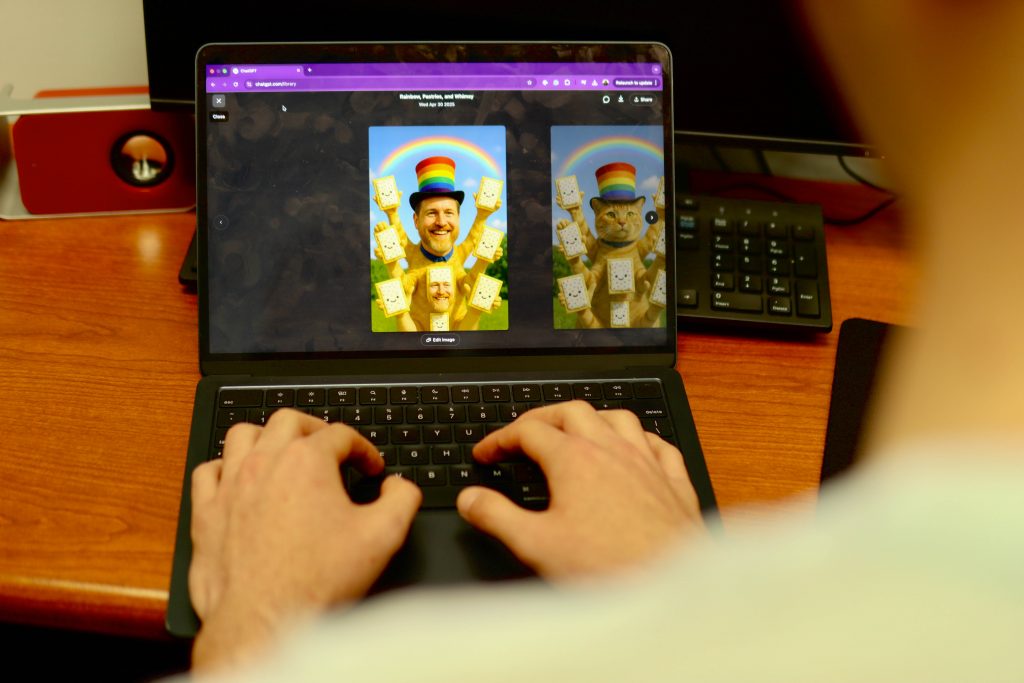
According to Merriam-Webster, technophobia is defined as “fear or dislike of advanced technology or complex devices and especially computers.” When grocery stores and retail chain stores implemented self-checkout machines, it was the technophobes who provided the most pushback, arguing over privacy and theft concerns, as well as the potential elimination of cashier workers. Following the groundbreaking release of ChatGPT in 2022, it was the technophobes who warned that “AI will take our jobs.” Despite the generalized fear of AI’s potential to replace humans, the emergence of AI-image generators, such as DALL-E 2 and Midjourney, has sparked more meaningful debates over whether art developed by artificial intelligence should be considered real art. Is this another wave of technophobic pushback, or are artists expressing valid concern about their livelihoods?
To explore this, we must ask: What defines art?
Plato developed the idea of art as “mimesis” – or imitation when translated from Greek. He believed art was a form of representation and should be valued according to the degree of which it replicated its subject. During the Romantic movement, artwork was meant to evoke an emotional response from its audience. In the 20th century, Immanuel Kant argued that art should be judged not by aesthetic beauty, but by its formal qualities, which was a key factor as art became more abstract.
Joshua Issa, in his blog post on Medium.com, argues that when we consider art as a sensory, creative and interpretive work, art may then be defined as “something that was intentionally created to provide a sensory experience for the sake of interpreting the world.” Issa then argues that AI art cannot be art, emphasizing that for something to be considered art, there must be some level of intentional creativity and meaning – something generative AI lacks.
Considering Issa’s definition of art, along with the three elements that help define art, it is difficult to make a compelling argument for generative AI art to be considered a true form of art.
When it comes to evaluating art, it is crucial to make a distinction between creation and imitation. While AI models like DALL-E 2 create accurate depictions of the inputs you make, it was not an original creation. There is no point-of-view being expressed, no invitation for self-reflection. AI does not ask itself what to include, what message it wants to convey, what colors it should use over others, it isjust high-probability outputs.
Another distinction that must be made is authorship. If AI is just a tool, then who is the actual creator of the work? The IT engineers? The person who provided the prompt? Tools like the paintbrush, musical instruments and even cameras still require a human touch to allow one’s emotions to speak through their work. An AI model cannot illustrate emotions the way humans can, regardless of how many lines of code are written to mimic them.
While AI is certainly here to stay, it might be better to view AI-generated images as design simulations rather than artistic expression. Maybe I am underestimating its ability, but as an amateur in the world of AI, because I am not studying computer science, generative AI tools cannot produce real art. After all, AI is artificial, and no amount of data used to train AI will replace an original work of art. True intelligence coincides with a certain level of self-awareness, something AI will never achieve.


